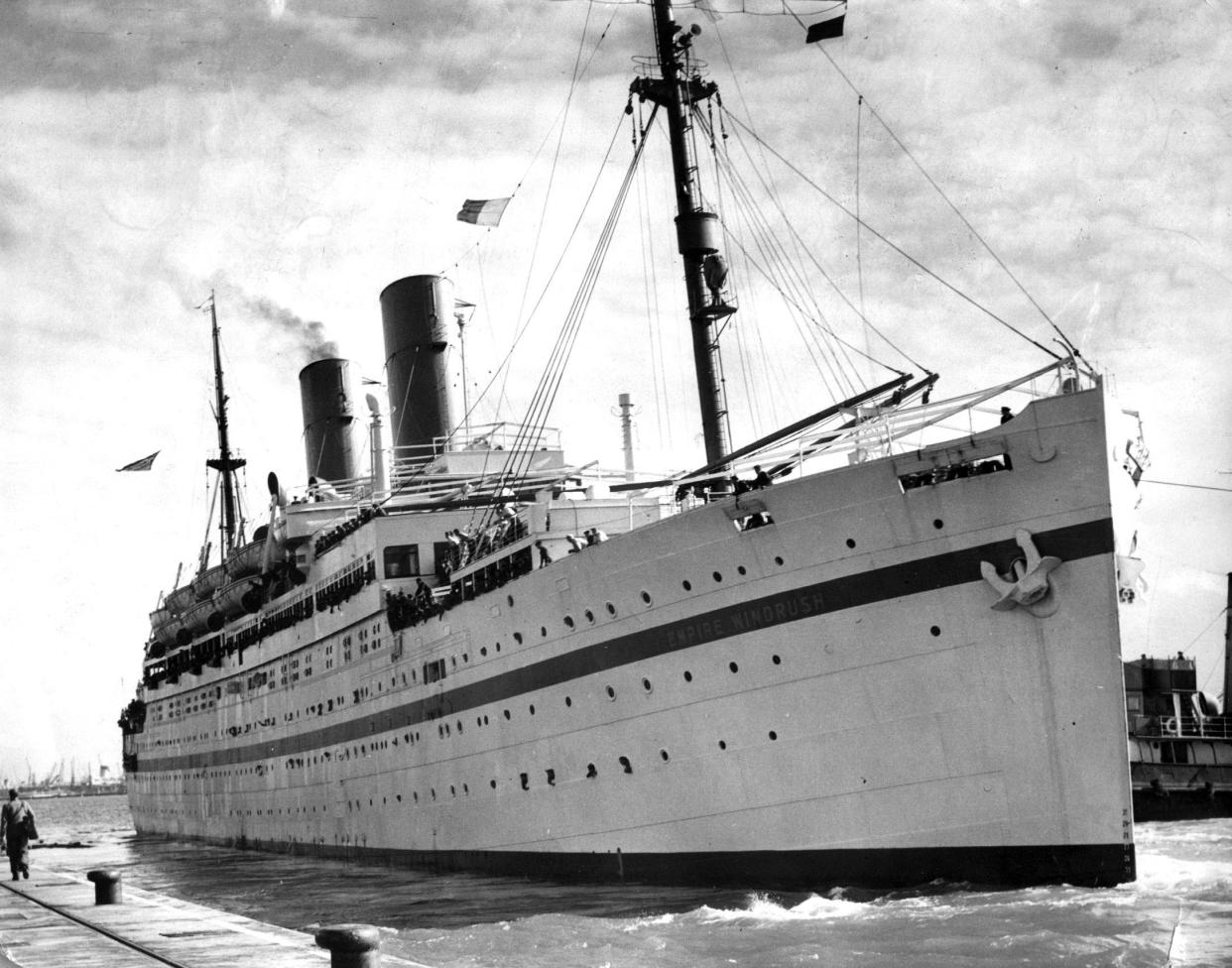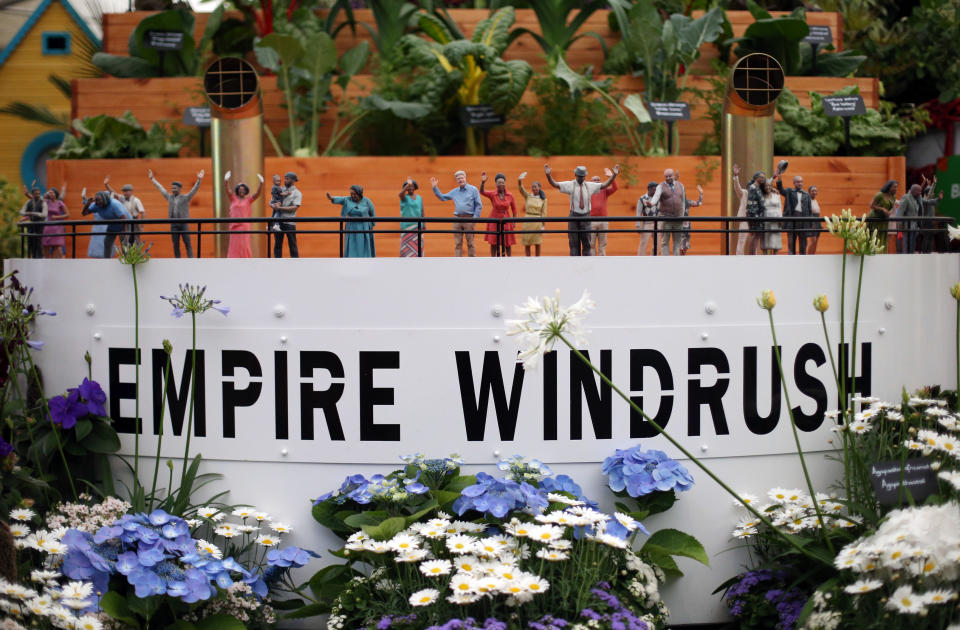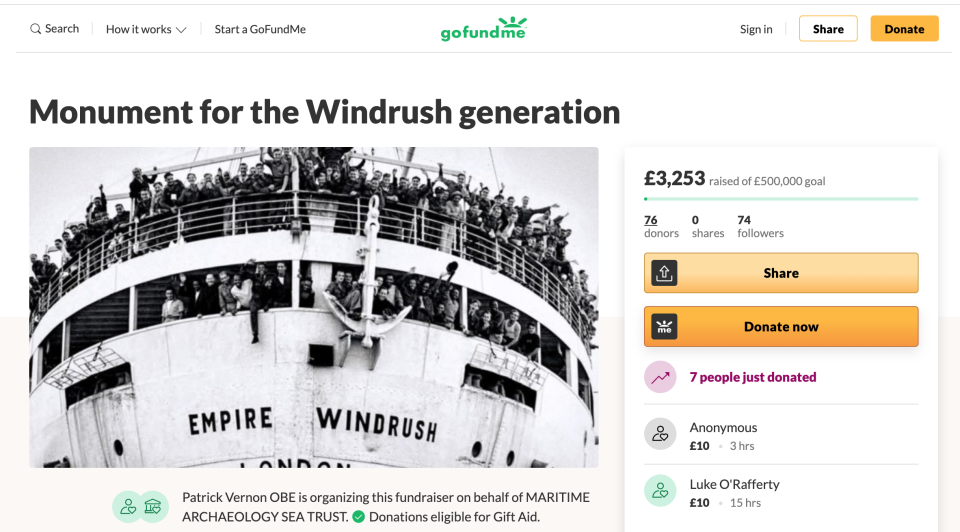Fundraisers appeal for donations for project to retrieve Empire Windrush anchor to turn it into a memorial

Organisers of a fundraiser to retrieve the anchor of the sunken Empire Windrush and turn it into a memorial are appealing for donations “big and small” to help turn their ambitions into a reality.
A fundraiser has been set up through GoFundMe to form a monument to mark the significance of the Windrush generation using the anchor of the ship, which currently lies 2,800 metres under the sea off the coast of Algeria.
The fundraiser comes amid a debate over monuments in Britain following the tearing down of the statue of slave trader Edward Colston in Bristol during a Black Lives Matter protest.
Patrick Vernon OBE, a child of the Windrush Generation himself, is the driving force behind the campaign to recover the Windrush anchor and use it as a memorial. He has been pushing for the move for over a year, and hopes the current focus on memorials could encourage people to donate and turn it into a reality.

Vernon, who successfully led the campaign that established 22 June as Windrush Day – a national day acknowledging the migrant contribution to UK society – said: “I thought, if we are going to have a memorial, why not get the anchor of the ship to be a memorial. We know where it is, it’s at the bottom of the Med.
“Part of the experience of ethnic minorities in Britain is that there are no memorials. There are more memorials about cats and dogs than the black and Asian and minority ethnic community’s contribution to Britain.
“There are no memorials or monuments that celebration the rise of multi-cultural Britain since the Second World War. There’s nothing.
Read more: What is the Windrush scandal?
“When we started to scope it out and have a conversation about this, people were thinking, ‘What’s the fuss?’ But now there’s a national debate about what history is and the validity of things around historic monuments and statues.
“I believe this monument featuring the anchor of the Empire Windrush could be a source of inspiration for generations of black, brown and white people in Britain seeking to understand racism, white privilege, and trying to establish a society where citizenship and belonging is for all.
“It will symbolise migration, racial equality and the shared history of belonging and citizenship. Like the Statue of Liberty, it can become a beacon of hope.”
He said the aim should be to realise the dream within three years, given that June 2023 will be the 75th anniversary of the first arrival of the Windrush Generation.

The Empire Windrush is best known for its historic voyage from Kingston, Jamaica, to London carrying the first wave of Windrush immigrants.
It continued to operate in service for the Ministry of Transport, typically carrying military personnel and their families back to the UK from the far east.
In February 1954, the ship’s engine room caught fire, causing the immediate evacuation of all passengers and crew.
A rescue operation saved 1,494 people on board, though four engine room workers were killed, and the abandoned ship, still ablaze, sank two days later while it was being towed to Gibraltar.
Vernon has teamed up with maritime heritage charity Mast, whose founder is award-winning maritime archaeologist Jessica Berry, as well as well-known shipwreck hunter David Mearns, who has agreed to lead the search for the wreck and anchor recovery, to complete the project, and visual communicator and researcher Max Holloway.

According to their fundraiser, the wreck lies about 23 nautical miles off the coast of Algeria on a relatively flat portion of the seabed approximately 2,800 metres deep.
Because of the way it sank and where it sank, the team are 95% sure they can find it and recover the anchor.
In total, recovering the anchor is expected to cost around £2m, but the GoFundMe campaign is aiming to raise £500,000 from the public.
After that, Vernon and his fellow fundraisers are hoping to achieve sponsorship and support to help reach the final amount.
Read more: Black history lessons should be taught in all schools, campaigners demand
So far they have raised £3,253, and Vernon said they are welcoming any donations, “no matter how big or small”.
“We’ve got the technical expertise to do this, we just need the money to make it happen,” he said.
“What’s happening during Black Lives Matter is you have got lots of companies giving out money so maybe there might be someone who wants to support this initiative and that would be fantastic.
“Who knows, it might bring the country together. There’s so much division going on and this might be something positive.
“We spend a lot of time talking about the past but we should also be looking to the future and thinking about what kind of memorials we want to have in a future Britain.
“The anchor itself could be part of that contribution towards looking to the future.”
On Wednesday, 24 June, the group will hold a consultation via Zoom to explain the project and how it will work. Sign up here.

 Yahoo News
Yahoo News 

